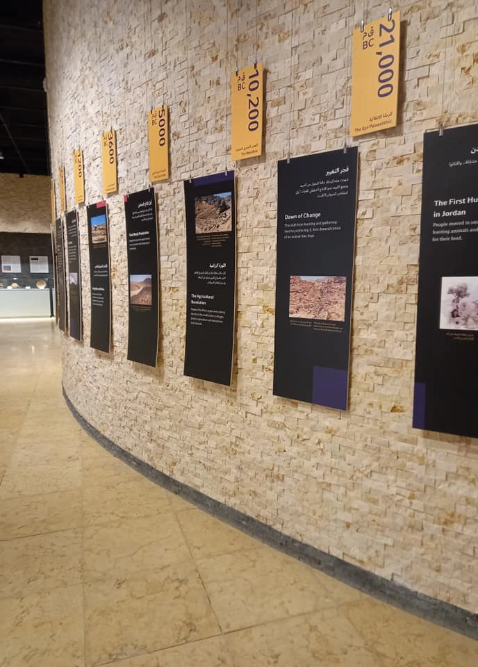Gallery 7: Waning of Petra
The Nabataean kingdom, which enjoyed a period of prosperity, was annexed to the Roman Empire in 106. This exhibition provides an overview of the history of the Petra region, which gradually lost its urban aspect as a trading center and was transformed into a rural village, through artifacts excavated from several archaeological sites of each period since the end of the Nabataean Kingdom, from the Roman, Byzantine to the Medieval Islamic period and the invasion of the Franks (the Crusaders).
- Nabataea and Rome
- Petra under the Romans
- Christian Petra
- Early Islamic Petra
- Medieval Petra
From Nabataean to Arabic

Already during the 1st century BC, the Nabataean script started moving away from the Aramaic. Nabataean scribes started connecting some of their letters and changing their forms according to their position within the word, thus creating a new cursive form of writing. This trend continued and evolved in the later Nabataean inscriptions. The last known Nabataean inscription, from Hegra-Mada’in Salih, is dated to AD 356. Thus the use of the Nabataean script continued well after the loss of Nabataean political independence, as did many other aspects of the Nabataean culture
A few texts, mainly from northwestern Saudi Arabia, show a clear picture of the transition from the Nabataean to the Arabic script during the 4th and 5th centuries AD. The earliest recognised Arabic inscriptions come from three regions: Syria, South Arabia (region of Najran) and North Arabia (region of al-Jawf) and date to the 6th century AD.
 For Audio Guidance, please Click here
For Audio Guidance, please Click here

Panther Handle Vase

This large vase was made of the distinctive, exotic Phrygian Marble of Anatolia -- it is among the largest and finest known examples of this Roman type. Its import into Petra is testimony to the city’s wealth following the Roman annexation. The vase was found shattered into fragments in the ruins of the Petra Church, where it is reused as a water basin.
 For Audio Guidance, please Click here
For Audio Guidance, please Click here






